
Imagine living to be 99-years-old and living your entire life in the same place, never going beyond what you know. This is the story of Alfred – Alfred Jackson – an enslaved man who spent the better part of his life in servitude to President Andrew Jackson.
Alfred Jackson: The Son of Betty
Alfred, was the son of Betty, Andrew Jackson’s enslaved cook for 50 years. Betty, inherited the job of cook from her mother, Old Hannah. Alfred, was born at the Hermitage and he lived on the plantation longer than anyone on record. He was responsible for maintaining the wagons and farm equipment, and he tended the horses. He married Gracy and they had two children. Alfred also served as Andrew Jackson’s personal man servant.
This was just part of Alfred’s story told to us by the period-dressed docent on our tour of Andrew Jackson’s Hermitage plantation.
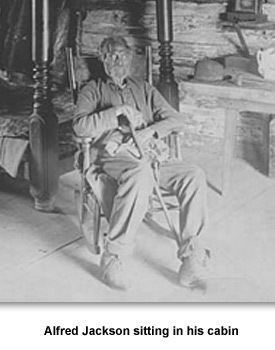
The Hermitage
I think what makes the Hermitage such a fascinating place to visit is that the home was never occupied by anyone outside of the Andrew Jackson family line. It is because of the family ownership and continual occupation, approximately 90% of the furnishings are original to the home.
It’s a complete rarity to find such a thing. Think about it. We’re talking about a mansion that was built in 1821, lived in by generations of the same family, and their possessions are still in the home. That fact, in itself, is an incredible story.
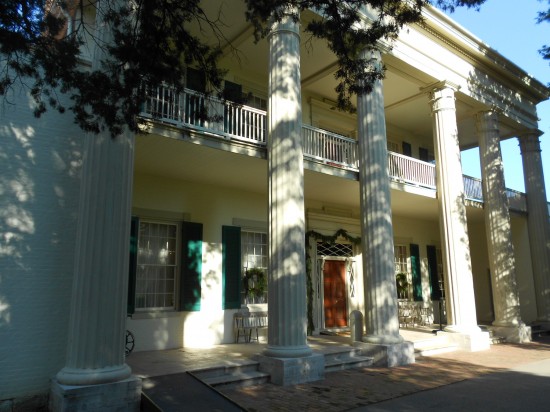
Alfred Jackson: A Tenant Farmer
To continue with Alfred’s story. As it was explained to us, after emancipation Alfred stayed on the land and became a tenant farmer. He chose to continue to live in the same log cabin he lived in throughout his life as a slave.
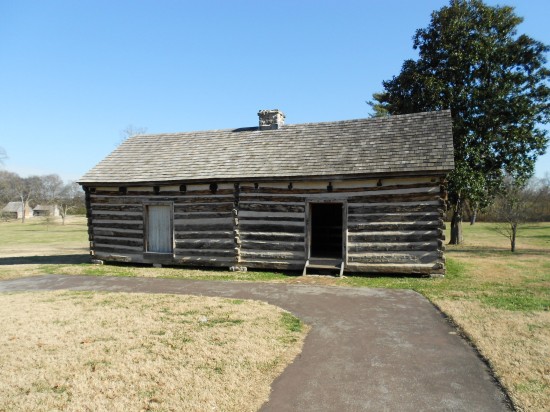
Civil War Aftermath
After the civil war, the south was destitute, the confederate dollar was worthless. Although the last two remaining members of the Jackson descendants were still living in the mansion, the mansion and the farm fell into a state of disrepair. Alfred, who had been able to save some money as a tenant farmer, purchased a few pieces of furniture from the mansion.
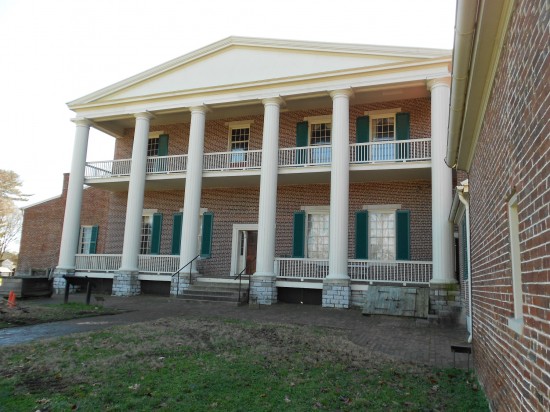
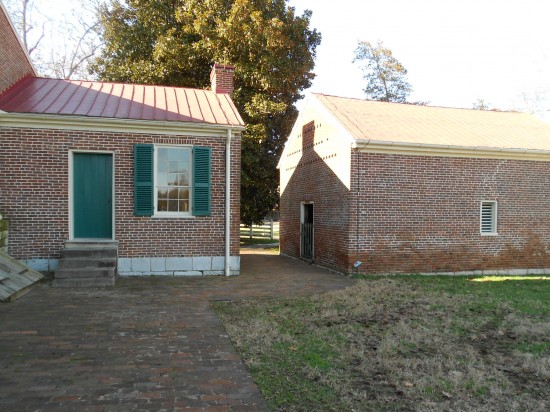
Ladies Hermitage Association
In 1889 the newly chartered Ladies Hermitage Association gained control and ownership over a section of the plantation including the mansion, outbuildings and 25-acres of land.
“It took over 110 years, but in 2003 the LHA finally had control of the entire 1,050-acre Hermitage cotton plantation that Andrew Jackson owned when he died in 1845. Today, the LHA manages 1,120 acres, making The Hermitage one of the largest and most popular historic site museums in America.” The Hermitage
One Last Request
Alfred, owning several pieces of the original mansion furnishings, was asked if he would sell the pieces to the LHA in order to return them to the mansion. He did so, but he had one request and the request was that he be buried near President Jackson and his wife, Rachel. The LHA held up their end of the bargain and Alfred’s grave is in the garden, just to the side of the Jackson shrine.
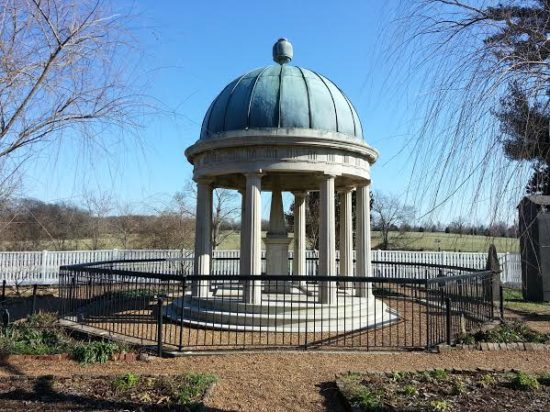
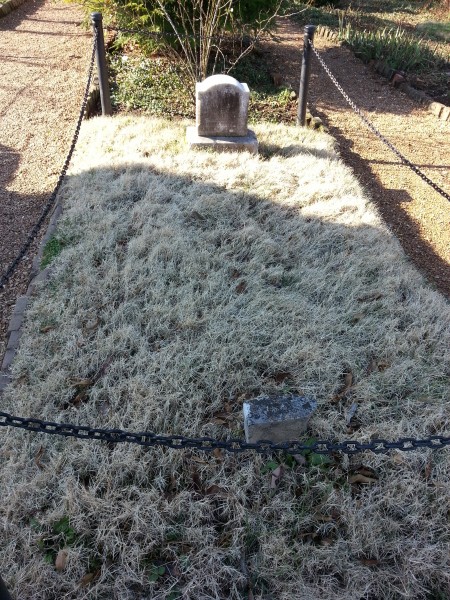
Alfred Jackson: Born A Slave
Alfred Jackson died at the age of 99, which is what we were told on our tour. However, there are, apparently, different thoughts on this as noted in the thread of comments on our post.
Alfred was born a slave, was emancipated and became a tenant farmer and he volunteered as the first tour docent at the Hermitage. I’m adding Alfred to my list of those I wish I could invite to dinner. Think about the stories he could tell! I can’t help but wonder, why did Alfred stay after he was freed? Was he loyal to Jackson or was he simply content to stay in the only place he had ever known? So many questions left unanswered.
Andrew Jackson
From what we learned on the tour and from what I’ve read, Andrew Jackson was a man of contradictions. Like many men of wealth at the time, Jackson built his wealth on the backs of an enslaved community having owned a large number of slaves.

As the 7th president of the United States Jackson campaigned for the common man, but he owned slaves. He considered his slaves his black family. What was explained to us, by the docent, was that he felt he was good to them because he clothed, fed and housed them. However, he was not opposed to having them whipped for insolence. If they were in his good graces, all was well, but if someone crossed him, there were harsh consequences. He actually took legal measures (against the overseer) when his overseer killed one of his slaves. But, what was the actual motivation for the action?
The Hermitage
The Hermitage is an amazing historical site; not only the mansion, but the outbuildings as well and the surrounding farm lands. Located just outside of the thriving city of Nashville, our docent reminded us that in 1821 – when the Hermitage mansion was completed – Nashville was considered living remote; back country. The wild west if you will, where one had to be self-sufficient and live off of the land.
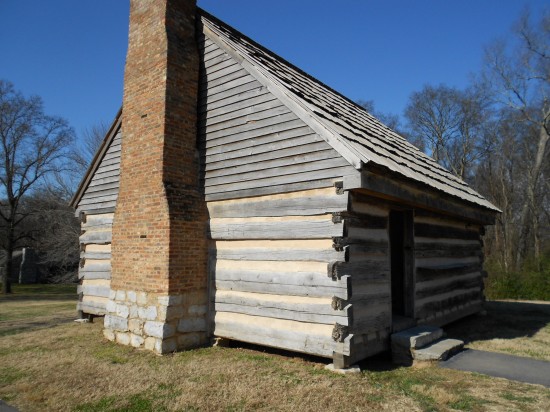
Visiting the Hermitage – and learning the story of Alfred Jackson – is a fascinating study in history and it paints a realistic picture of daily life in that era. But it’s a picture of contradictions. To read more about Andrew Jackson: Trail of Tears


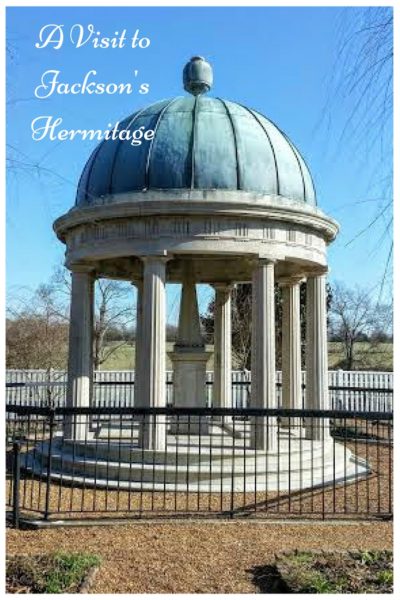



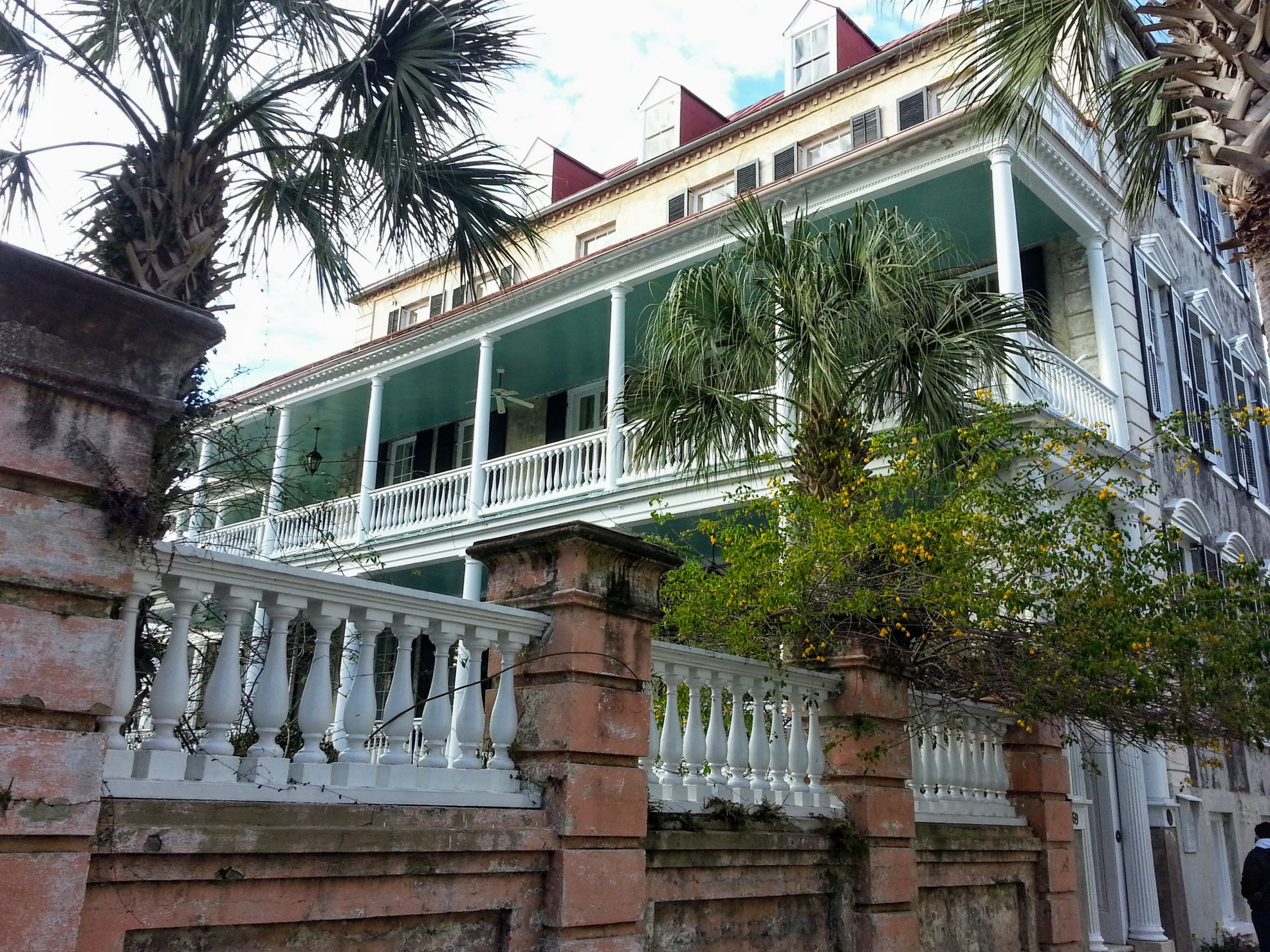
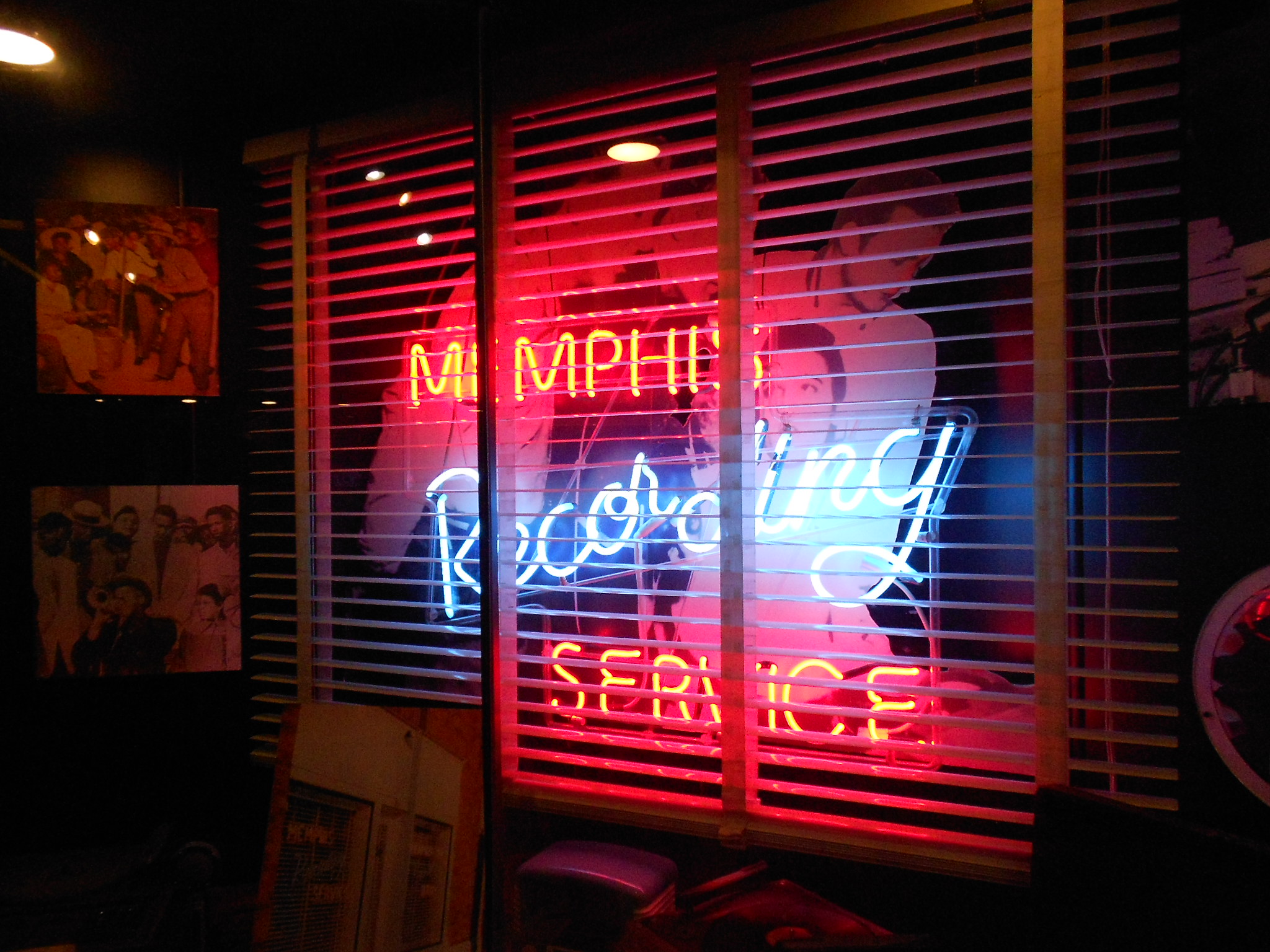
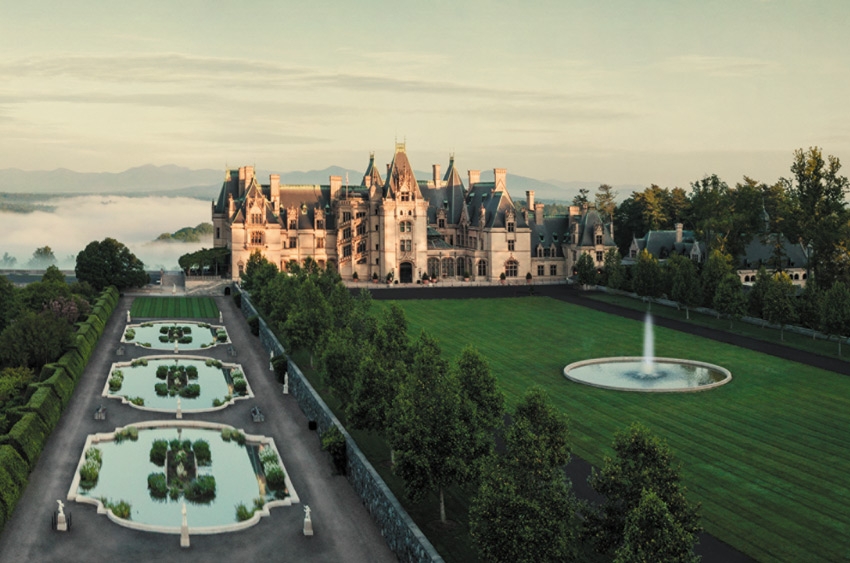





Thank you for sharing. Grandfather Alred is my 4th Great Grandfather and many of my family members were enslaved at the Hermitage. The first time I made a visit to the Hermitage, I was emotionally drained. When I saw his grave I broke down crying. I can’t imagine being owned by another human being and one dehumanizing you and your family for centuries but I admire his strength and how smart he was to be buried by the President. He was determined to be remember and for his story to be told.
Kimberly I love talking about Alfred he is my favorite! I would love to chat with you more about him. My email is don1142@gmail.com
I took the behind-the-scenes VIP tour last summer. Also, the wagon tour of the slave cabins. Very interesting! They were both great. I recommend them.
Thank you, Mary, for finding us and for leaving a comment about your visit to The Hermitage. It is such a fascinating walk through history.
Alfred is buried by both the General and Rachel. If Alfred was a disgruntled slave he would not give back the items he bought from Junior. Instead he worked out a deal to be buried in the garden. From all that I read Alfred loved the General and the General loved him! So many people have the wrong impression of how the enslaved people were treated! Did you know that Old Hannah was so upset when Rachel died that they actually had to pull her off her grave when she was buried! It’s hard for us today to understand the thought of slavery it doesn’t seem real that something like that actually took place! But we have to remember it was something at that time that happened. But the General treated them better than anywhere else in the country! Alfred was my favorite at the Hermitage, he was a very smart man!
I visited the Hermitage last weekend and was also fascinated by Alfred. Love the photo of him with the extravagant 4-poster bed in his austere cabin. I can’t help but wonder if having himself buried next to Rachel wasn’t some sort of thumbing the nose to Jackson, and not necessarily out of respect for the man.
Alfred was 89 years old. He died in 1901 he was born in the kitchen by the original Hermitage. The kitchen wasn’t built until 1805.
Actually, my friend and I visited the Hermitage today and Alfred died when he was 98 years old.
I’ve always been fascinated with history and had the pleasure of visiting yesterday…You can really feel the broad disparity in how the slaves lived…I agree with the person who made the comment about how Alfred and many other slaves felt institutionalized after being emancipated….I think there’s a vast majority of our current population that doesn’t realize the reiduial effects of Slavery on Blacks and Whites….What happened for those hundreds of years during slavery still effects our mindset now, politically and socially….That’s why I’m an advocate for studying History, not just American but world history as well….I highly recommend visiting The Hermitage, the hosts ( dressed in period wardrobe ) were graceful and knowledgeable as they guided us through a dark part of our history.
Thank you for posting such a thoughtful comment, Eric. The Hermitage is living history.
I just visited The Hermitage – and have the brochure in front of me. I can’t figure out the dates that are being mentioned – – Alfred was 99 years old when he died in 1901, which means he was born in 1802. It was stated that he lived his entire life at The Hermitage. However, according to the brochure, the property was purchased by Jackson in 1804. ???
Also, my husband heard a nationally known political commentator state this morning that Jackson funded the building of his home from profits gained by the sale of Indian lands. ???
Alfred was actually 89 when he died in 1901. He was born in the kitchen that was built in 1805. Alfred thought he was born in 1803 but Jackson didn’t purchase the property until 1804. I’ve seen a document that shows Alfreds age when he was a teenager, so he was born around 1812.
I agree with the comments about he was institutionalized. To him it was like a prisoner onced released from prison would rather go back because they know other way.
A good story about Alfred he was the first tour guide 1st the Hermitage. It only cost $0.10. But for $0.10 he would greet you at the front door and take you straight to the back door. If you have him more money he would show you the rest of the mansion!
I would love for all of you to come to the Hermitage and take our “Beyond the Mansion” tour. We do the tour with a team of horses pulling a wagon that tells the history of the enslaved families that made the life style that General Jackson and Rachel were able to live. Yes it breaks my heart to hear the stories of the enslaved people that lived there, but it also reminds me that this should never happen again!
We get all of our facts from the Historians at the Hermitage that unearthed over 800,000 artifacts. So please I invite anyone to come see this in person.
Thank you, Don, for sending us such a kind invitation. If we make it back to the Hermitage, we accept!
My family was at Fort Nashborough at its beginning. My 4th Great-grandfather Ebenezer Titus was a signer of the Cumberland Compact in 1780. They were living in the area when Andrew Jackson arrived in 1788 and boarded with the Donelson’s. I have visited the Hermitage two times and absolutely love the place. My 3rd great grandfather, James Titus was President of the Legislative Counsil of the Mississippi Territory. I have a copy of a letter he wrote in 1816 to Major Generall Andrew Jackson asking for his influence of friends in politics to help Mississippi gain statehood. He started the letter…..To an old acquantance. Obviously, as early settlers, he had known Jackson who is a favorite of mine. I look forward to seeing the Hermitage again.
What an interesting family history, thank you so much for sharing.
Patti, What a story. It is difficult for us to think that Jackson was a great guy, but times have changed and I think you did a great job telling the story.
Thanks so much, Corinne! My goal was to approach the Hermitage/Jackson from a different view point for those who have read other blogs about similar experiences. Something about Alfred staying on after emancipation and being buried near Jackson and his wife stuck with me.
What an interesting read and fascinating story! You made Alfred come to life for me and I would love to visit the Hermitage. Thanks for your virtual tour!

Anita @ No Particular Place To Go recently posted…Tamarindo or TamaGRINGO: Tourist Mecca On The Costa Rican Riviera
I hope you do get to visit the Hermitage, it is a definite step back in time.
Thank you for sharing the other side of history.

Lisa Richardson recently posted…Father’s Day 2014: Recalling Travels with Dad
You’re welcome! Thanks for stopping by.
I always thought the only Hermitage was in St. Petersburg, Russia so thanks for educating me! I imagine that with little education and probably few opportunities staying put was probably a reasonable choice for Alfred. Have you read Sue Monk Kidd’s newest book The Invention of Wings? It’s about two women – one white and one black – during slavery in the South and is a really compelling and deeply thought-provoking read that I highly recommend. I don’t believe it was possible to be decent and own slaves but many people did at the time.

Kay Dougherty recently posted…UNESCO World Heritage Site: Prambanan Temple, Indonesia
Well, I had no idea there was a Hermitage in Russia! Thank you for the book recommendation, it’s right up my alley for reading and I’ve already ordered it on my Kindle. Looking forward to reading it!
Thanks for the virtual tour of this historic plantation. I hope to visit the Hermitage in person some day.

Carole Terwilliger Meyers recently posted…Travel Articles: Travel Insurance Info
You’re welcome. I hope you get the chance to visit Hermitage, it’s well-worth the effort.
Wow, I would love to go on that tour at the Hermitage and visit the site in general, Patti. I was shaking my head from side to side saying “wow…” then came to where you wrote being born into slaving and it REALLY hit home there. This was a fantastic read and you know how much I love history! Thank you 🙂

Mike recently posted…I’m Phoenix, A Golden Retriever: A Lionheart Against Cancer
Thanks Mike. I love knowing someone else finds history as interesting as I do. I always say that walking in the path of those who came before us is one of my favorite things to do. I have more stories coming up, so stay tuned.
I find it incredibly sad he lived for 99 years in the same place –

He sounds institutionalised – Lived so long being ‘cared’ for he couldn’t see beyond the ‘walls’:(
I’m not surprised his wife and children wanted no part of Jackson’s name –
Thank you for telling this tale of American history.
Linda ~ Journey Jottings recently posted…How to Travel Journal like a Map-Maker
That’s a good way to look at it, being institutionalized, it’s a good description of it. I can see where it might have been frightening to leave a place where you lived your entire life. Maybe the lessor of two evils kind of choice?
I loved reading this story of Alfred! He must have been quite content to stay in the same place for 99 years. I can’t help but think he had a pretty happy and healthy life to live so long. I’m glad to hear a story about slaves being treated well. My opinion of Andrew Jackson just went way up. I don’t think Alfred is that different than some of my high school friends who have never left the small town they grew up in almost 30 years after graduating from high school.

Michelle recently posted…Dog Sledding in June on the Mendenhall Glacier in Alaska
Thank you for sharing your perspective. I can’t imagine Alfred had a happy life because he was born into slavery. If he was “in favor” with Andrew Jackson then he may have been spared some of the atrocities cast upon the slaves at Hermitage. One of the questions asked of school groups who visit the Hermitage is – do you think Jackson was a good slave owner or a bad slave owner? The answer is, he was a bad slave owner because no man who owned another man could be seen as a good man.
Of course you are correct looking at it from todays stand point. However the children’s question is legit for the time they lived. Was he bad for todays time of course.
I am amazed that he lived until the age of 99 given all the hard work and labor he must have endured. I only visited my first plantation earlier this year. The docents we heard also whitewash history a bit but it is fascinating to learn the details of how life was then.
Loved the way you captured the story too!

Irene S. Levine recently posted…Bicycle Tourism: Cycling in midlife
That’s one of the things we appreciated at the Hermitage. They seemed to be very good about painting the whole picture, the good, the bad and the ugly. Our docent was an elderly woman and she was awesome because she told stories from her grandmother and what the south was like at the turn of the century.
I have not travelled the American south where slavery was king, and so it is quite a foreign concept to me. Thank goodness it was abolished! This does look like an interesting site and I will visit if I make it to Nashville.

Doreen Pendgracs recently posted…a visit to the Original Hawaiian Chocolate Factory
Thanks for stopping by Doreen. Where are you from?
So the question I have and wonder if it is explained is – who was his father? Andrew Jackson? After watching the movie, 12 years a slave, I can’t understand how human beings can mistreat anyone or anything and feel justified.

Neva @ Retire for the Fun of it recently posted…Vizcaya, an American Castle
No, Jackson wasn’t Alfred’s father. According to the list of slaves Jackson owned, Alfred’s father was a slave named, Ned. He was a carpenter on the plantation. Most slaves did not have last names so they were often given a nickname such as Old Hannah. I read that when Alfred, his wife and two children were emancipated, Alfred took the last name of Jackson, while his wife and children chose another last name.
Hi Patti,
I just stumbled on your site today. I am a descendant of Alfred Jackson and I have been to the Hermitage. I was always told growing up that Alfred was the son of Andrew Jackson. The Hermitage would neither confirm or deny that Alfred was his son. They do acknowledge me as a direct descendant of Alfred. As such, I am 24% European/white. My father and his brothers were all over 90% Black (per my uncle’s DNA, my dad’s only living brother). Regardless to what the Hermitage will or will not admit, Alfred Jackson, my great, great, great grandfather was Andrew Jackson’s son.
To clarify: Alfred Jackson is my great great great grandfather on my mother’s side. Her father was a Lyerson, they were owned by the donelsons ( the family of Andrew Jackson’s wife). As I used to say, Hannah had Betty, Betty had Alfred, Alfred had Sarah, Sarah had Nellie, Nellie had Benjamin, Benjamin had Sadie and Sadie had me (Leslie).
Thank you, Leslie, for sharing your family heritage with all of us. It would certainly explain the deep connection between Alfred and Andrew Jackson. Fascinating, clearly you’ve done a lot of research. Thank you again for reading our post and sharing your story.
Amazing personal history information you shared, Leslie. Thank you so much
Leslie before the COVID 19 I worked at the Hermitage driving the wagon and doing tours of the enslaved life. Alfred was my favorite one to talk about. Loved telling his stories! Would love to talk more about Alfred. My email is don1142@gmail.com
Very cool tour and history of this amazing person, what a historic house. I would love to visit it some day

noel recently posted…4th Street in Berkeley
Thanks Noel. With your talent for photography, Hermitage would be a great palette for you.
I wish to be a fly on the wall at your dinner party! What an amazing man, no doubt he would have stories: important, mezmerizing stories.

Tracey recently posted…Open Air Market Barranquilla
It sounds so ridiculous, but there are times when I feel jipped that I can’t get the behind the scenes story – the truth behind the legends. There is so much from history that we just don’t know, and never will. To be able to have a conversation with someone like Alfred, would just be so enlightening.
I’m having a hard time thinking that Andrew Jackson was a swell guy because he thought of his slaves as his “black family”. Do we know if the legal action Jackson took against the overseer who killed his slave was for loss of his “property” or the murder of a human being? I have visited the Hermitage. There are some interesting stories there—i.e. Rachel Jackson’s story.

Suzanne Fluhr recently posted…Singapore Selfie (A Visit to Singapore)
Completely agree, Suzanne. I don’t think we can ever begin to comprehend the mind set of the era that condoned owning another human being. On our Dec/Jan road trip we certainly learned a great deal in different locations. When we visited the slave mart in Charleston, we were dumbfounded to learn freed black men owned slaves. How could that be? Such an accepted practice?
Here is a link to the case about Jackson suing his overseer, if you’d like to read more. And yes, Rachel had quite the story of her own. Our docent told us that Andrew and Rachel were devoted to each other – another contradiction I can’t fathom – to be so devoted and yet so cruel to others.
http://www.tn4me.org/sapage.cfm/sa_id/174/era_id/4/major_id/21/minor_id/62
Not only did he have a black family but easily sold families and broke them up. He was heartless. I can not think of one redeemable thing about him
I am talking about Andrew jackson